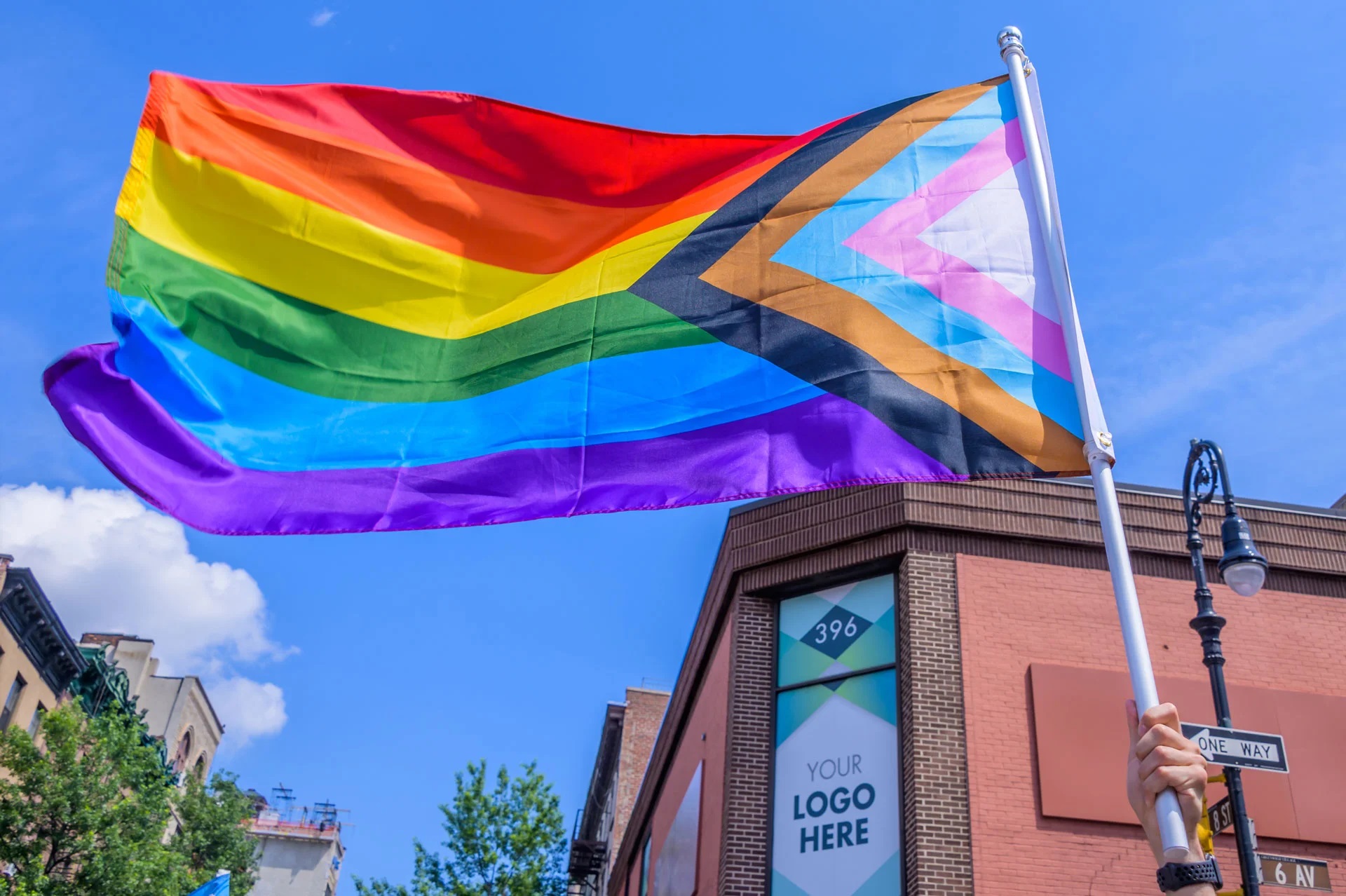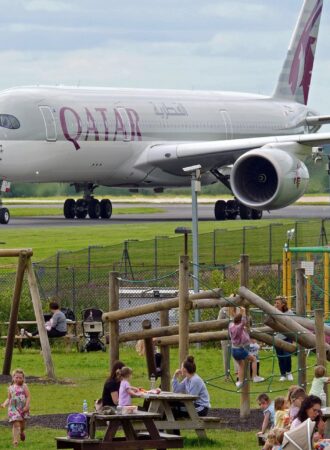As thousands of people line the streets of the city centre this weekend, and hundreds of volunteers dance, sing and wave at them, you’d be forgiven for thinking that Manchester Pride has always been a major event in the city – however, it’s actually still rather in its infancy.
To understand just how the city came to have one of the biggest celebrations of LGBTQ+ life in the world, you need to look back at Manchester’s role at the very forefront of the promotion and fight for the rights of LGBTQ+ people, going all the way back to the 60s.
From a scandalous cross-dressing drag ball in Hulme in the 1880s, to city-wide celebrations taking place every year on the August Bank Holiday Weekend, Manchester’s pride, and indeed LGBTQ+ rights have come a long, long way over the years.

The Beginning…
One of the most notorious events to have happened in Manchester, and one that helped cement the city as the UK’s gay capital, came 140 years ago in Hulme, when a secret cross-dressing drag ball was raided, with 47 men arrested. You can read all about this interesting chapter of Manchester’s history right here – before we progress about 80 years to 1964.
It was then that the North West Homosexual Law Reform Committee was formed by Allan Horsfall in Atherton, which evolved into the national Campaign for Homosexual Equality (CHE) five years later. Instrumental in decriminalising homosexuality activity between consenting males, it was the most successful attempt ever in this country to create a mass membership democratic LGBT organisation.
Although the movement’s legislative gains over the years were quite small, it changed the lives of thousands of individuals through its groups, encouraging self-respect and self-confidence through ‘coming out’. It also made grassroots gains in changing the attitudes of police, social workers, doctors and teachers to whom it gave talks and distributed information.
Then in 1978, following the prosecution of Gay News magazine for blasphemy, the CHE was joined by a number of other gay rights organisations, including the Gay Activist Alliance, to actively campaign, picket and fight for LGBT rights in Manchester, at a time when the community had very few.

HIV & AIDS
It was 1980 when the first reports of an unidentifiable illness began to emerge from the United States. Patients were experiencing immune collapse, followed by rapid health deterioration and, finally, death. The virus was originally named GRID (Gay-Related Immune Disorder).
The British tabloids callously referred to it as the ‘gay plague‘.
In 1982 Terrence Higgins was the first British gay man to be diagnosed with and die of an AIDS-related illness. Following his death, his friend Martyn Butler, partner Rupert Whitaker and close friends set up the Terry Higgins Trust.
The charity, which was later renamed the Terrence Higgins Trust, remains a leading sexual health and HIV charity dedicated to promoting awareness of and preventing the spread of HIV and AIDS to this day.


Legislation & ‘Section 28’
In 1985, Conservative Minister for Health Ken Clarke enacted powers to keep people with AIDS in hospital against their will. The only known case of these powers being used is in Manchester when the council held an emergency meeting granting an order to keep a gay man being treated for AIDS in Monsall Hospital for three weeks, after he had asked to go home for the weekend.
The order sparked major protests. Following a court case, the order was lifted and he was allowed to leave the hospital 10 days later.
That same year, six gay activists set up AIDS-line – a voluntary helpline – in Bloom Street in Manchester. As the cause gathered support from the council (with the formation of an AIDS working party) and finance from the North Western Regional Health Authority, the helpline evolved to become George House Trust and Body Positive North West.
Also in 1985, Manchester City Council was awarded a £1,700 grant to put on a two-week celebration, complete with a huge banner adorning Oxford Street and Manchester Pride was born!
However, just three years later, the Conservative Government introduced ‘Section 28’, forbidding the ‘promotion of homosexuality’ in schools and local authorities. The act disallowed the promotion of services for homosexuals and was the first anti-gay legislation in over 100 years.

The Fight Back
With LGBTQ+ people already struggling to cope with the AIDS epidemic, it was a heartless attempt to repress the community. However, on February 20th 1988, 20,000 people marched through the streets of Manchester to protest against Section 28. This event is seen as a pivotal moment in the city’s LGBT+ history. The legislation was finally repealed in 2003.
Activists from the Section 28 protests formed Manchester’s faction of ACT UP, a chapter of the direct action movement that started in New York in 1987.
ACT UP, the AIDS Coalition to Unleash Power, used direct action to raise awareness of HIV and to challenge the government on its inaction and pharmaceutical companies for their greed. In one example, ACT UP members stuffed tennis balls with condoms and threw them over the walls of Strangeways prison in protest at the government’s refusal to distribute condoms in prisons.

The Mardi Gras & Gayfest
Throughout the latter half of the 80s, fundraising events were held over the August Bank Holiday weekend, starting with a jumble sale outside the Rembrant Hotel, and evolving into the Manchester Mardi Gras, a “Carnival of Fun” which managed to raise over £15,000 for HIV and AIDS causes in its first year.
The Mardi Gras continued to grow throughout the 90s, until in 1999 when the council took control of the event and introduced tickets and fences. However, the following year the community retook control of the event and in 2000 and 2001 it was known as ‘Gayfest’.
Manchester played host to EuroPride in 2003 with around 37,000 people in attendance, and ticket sales and bucket collections helped to raise approximately £128k for good causes. At the closing ceremony it was announced that subsequent events would be known as ‘Manchester Pride’, and in 2007 Manchester Pride became a registered charity.


Manchester Pride
Over the last 15 years, Manchester Pride has become a loud and proud display of queer identity and expression. The charity has used the August Bank Holiday events to celebrate and elevate queer talent, provide work for Manchester’s LGBTQ+ communities and support queer owned and run businesses, whilst raising thousands of pounds for LGBTQ+ good causes.
The famous Manchester Pride Parade is the city’s biggest parade, and in 2018, Manchester Pride became the first Pride in the UK to adopt the black and brown stripes to our cherished LGBTQ+ symbol, the iconic rainbow flag.
The addition of these colours is to ensure that LGBTQ+ people of colour from Black, Asian and other ethnic minority backgrounds feel represented and welcome at all events.
Today the Manchester Pride Charity campaigns all year round in their mission to improve the lives of LGBTQ+ people in Greater Manchester and beyond.
……………………………


